Unexpected Consequences: The Javanese Batik Collection of Thailand’s King Rama V (r. 1868-1910)
The Queen Sirikit Museum of Textiles (QSMT) opened in Bangkok on the grounds of the Grand Palace in 2012.1 The museum is housed in an 1870s building by an Italian architect. It had been unoccupied for several decades when it was granted to Her Majesty Queen Sirikit in 2004 by His Majesty King Bhumibol Adulyadej (r. 1947-2016) for the creation of a state-of-the-art textile museum.
It was in 2009, during the course of seeking inspiration for the opening exhibitions, that the curatorial team was permitted access to the inner court of the Grand Palace. Textiles and clothing belonging to King Rama V had sat in locked storage there, undisturbed since his passing in 1910. During the course of looking at a variety of Thai court textiles and a few Indian saris from two of the king’s short visits to India, suddenly Javanese batik sarongs were placed on our worktable. Why were Javanese batiks in the Grand Palace in Bangkok? We learned that King Rama V had traveled to Java in 1871, 1896, and 1901. Since 1910, however, no one outside of two or three Palace intimates had ever seen the collection.
Time, war, and the environment are often hard on objects as fragile as textiles. As a result, although there are examples of Javanese batik dating before the dawn of the 20th century, they are relatively rare and many have little or no documentation regarding their date and circumstances of production. This was an important find for the history of Thailand and Thai-Indonesian relations as well as for the study of Indonesian batik. Accordingly, those present at this rediscovery were encouraged to remember the collection for a future exhibition and publication.
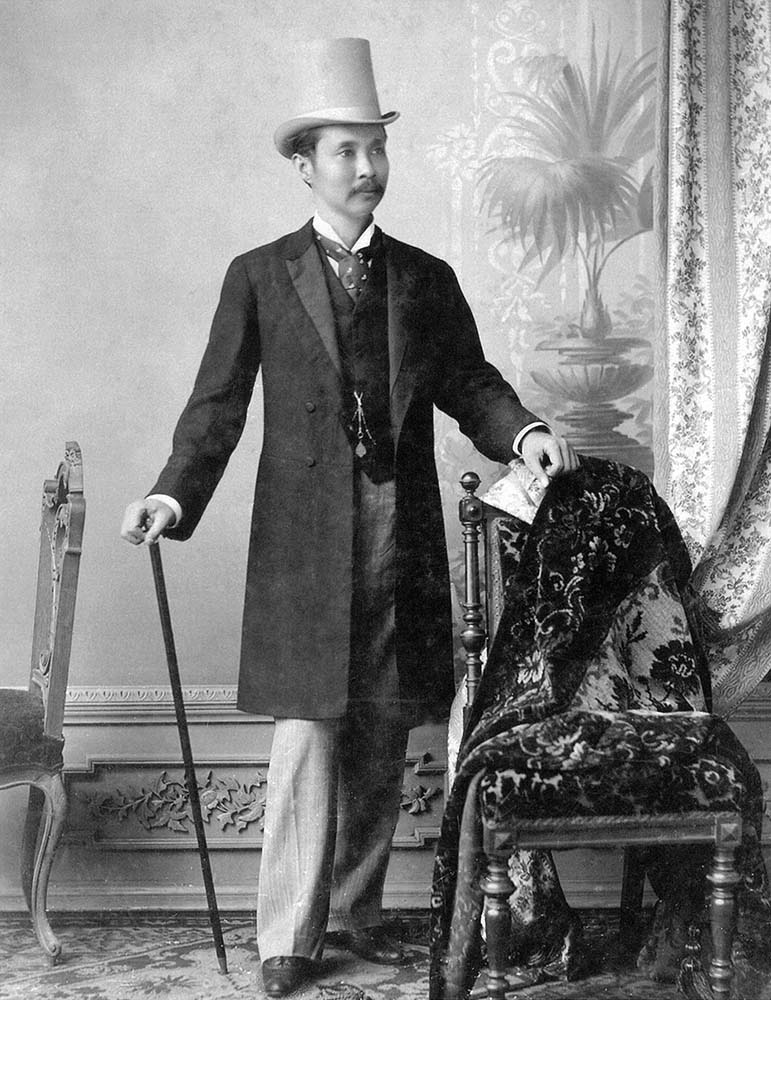
Fig.1: Portrait of HM King Chulalongkorn, 1896. Studio of Robert Lenz, Singapore. The Royal yacht stopped in British Singapore on both the outbound and return journeys of each of the king’s three trips to Java. Photo courtesy of the National Archives of Thailand.
Like the museum itself, the batik project was an international team effort requiring years of planning and research. In October 2018, our collective dream became reality with the opening of the exhibition, A Royal Treasure: The Javanese Batik Collection of King Chulalongkorn of Siam. 2 This short essay presents highlights both of the collection and significant discoveries made along the way, as well as a brief outline of the king’s travels in Java. 3
King Chulalongkorn was dedicated to keeping Siam independent of colonial domination, as well as modernising the country. Visiting Singapore and Java, therefore, was a way to see recent innovations such as streetcars and railroads the Dutch and English were bringing to their colonies. The visit was also intended to impress upon Europeans that the king was, in fact, a legitimate head of state, not a local chieftain, and an educated, English-speaking, progressive monarch in his own right [fig. 1].
Primary sources for the king’s visits are his personal diaries of the 1896 and 1901 trips; expense accounts of the second visit – including batik purchases; a hand-written English translation of descriptions of the 1896 visit in local Dutch newspapers on Java (made for the king, who could read English but not Dutch). In addition, there are photographs from the 1896 and 1901 visits, as well as hand-written inventory cards in Thai and English accompanying many pieces in the collection.
An official visit: 9 March-15 April 1871
No photographs are extant from this brief, 11-day visit of the 17-year-old king. We do know that he rode a tram in Batavia (modern Jakarta) – a great novelty – and stopped in only one other city, Semarang. There, at a local official’s home, the king witnessed “the dyeing and printing of sarongs and benevolently accepted a finished sarong.” Unfortunately, it was impossible to identify this piece in the surviving collection – if it still exists.
Five pieces in the collection, however, came from a famous batik workshop owned by Carolina Josephina von Franquemont (1817-1867), the earliest known Eurasian female entrepreneur. Her pieces are distinctive and were highly prized for decades after her workshop was destroyed in 1867 by a volcanic eruption in which she is believed to have perished. The sarongs (hip wrappers) attributed to her workshop in the collection all have their ends sewn together, indicating they had already been worn when acquired; sarongs purchased new would be unsewn. It could not be determined how the King acquired these pieces and whether it was on the first trip or a later one. But they are among the rarest pieces in any batik collection. Note the rich green dye, for which von Franquemont was famous [fig. 2].
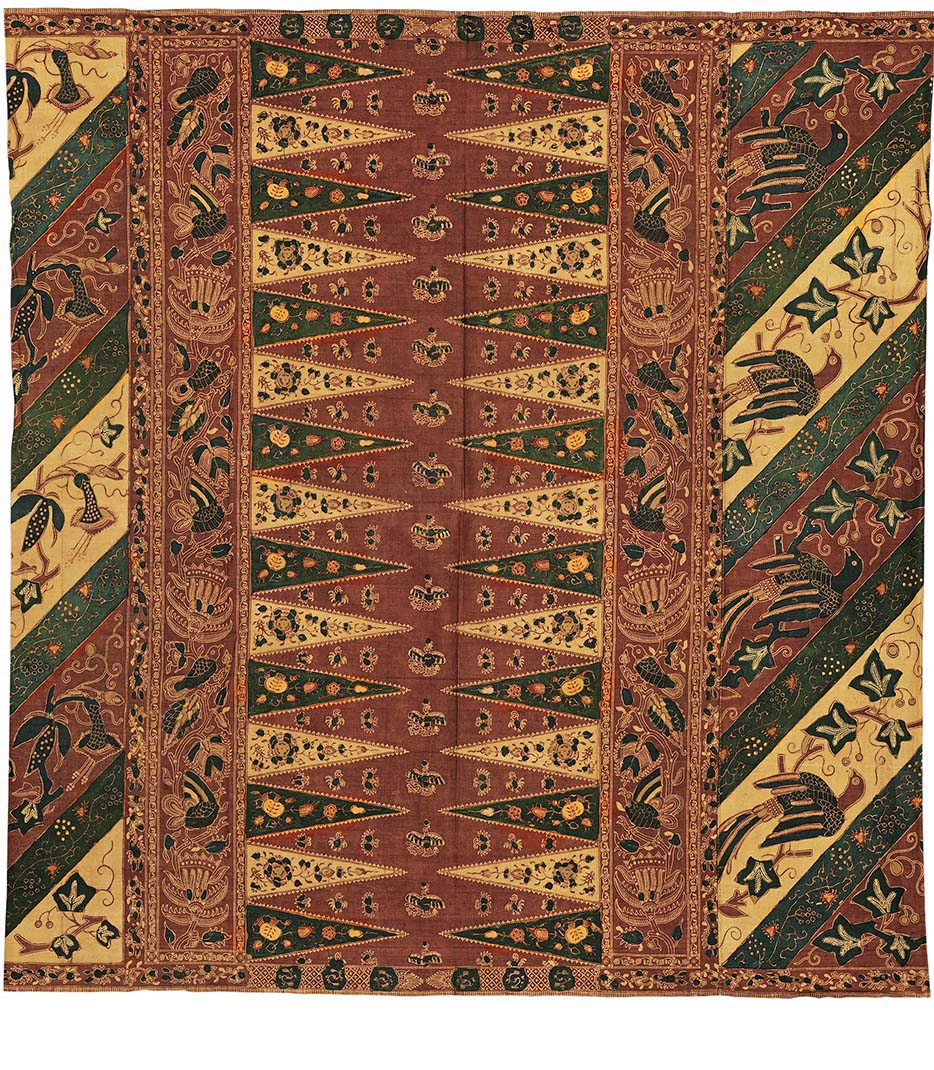
Fig. 2: Attributed to the workshop of Carolina Josephina von Franquemont, Semarang, Java. Sarung (sewn). Hand-drawn wax resist, brush-and-vat-dyed on plain weave cotton. 109.3 x 104 cm. Bureau of the Royal Household, Inv. #18. Photo courtesy of the Queen Sirikit Museum of Textiles, Bangkok.
A private journey, 9 May - 12 August 1896
Although this was a ‘private’ visit for the king’s health, it was avidly followed by the local Dutch-language press, and he was greeted by both Colonial and Javanese officials throughout his time there. The Sultan of Yogyakarta, HRH Hamengkubowono VII (r. 1879-1921), assigned the first professional Javanese photographer, Kassian Céphas, to photograph the royal party during their entire visit [fig. 3]. 4
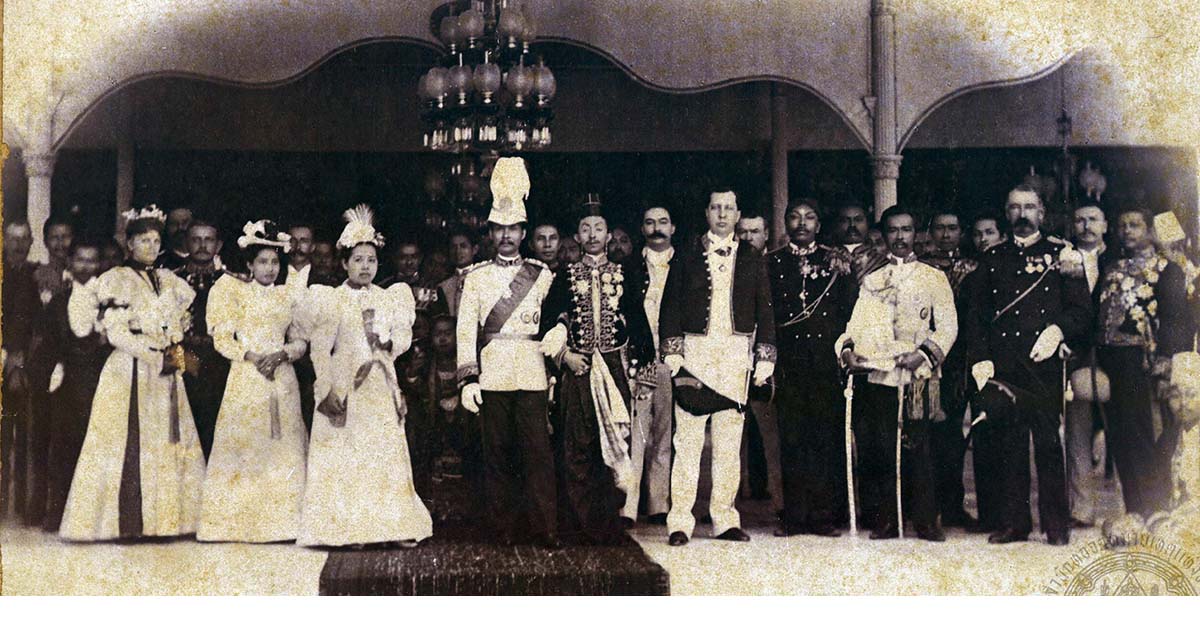
Fig. 3: HM King Chulalongkorn and HRH Susuhunan Pakubuwono X (r.1893-1939) arm-in-arm in the Keraton of Surakarta, Java, 6 July 1896. Photo courtesy of the National Archives of Thailand.
It was on this visit that His Majesty’s interest in Javanese art and culture, particularly batik, is most evident: the king’s diaries mention visiting batik workshops and local markets and purchasing from itinerant sellers. For example: “Went to the residence of the Raden Adipati [in Garut] and saw the sarong production process [batik] and I tried my hand at it.” 5 , p. 90. (In Thai, translated by S. Muddin). This is the king’s diary from his 1896 trip. National Archives of Thailand, Bangkok.]
Possibly the most important workshop visited by the king was on 3 July: “In the afternoon, I went to see kain making at the Western woman’s house. . . there are 100 workers…This workshop is one of the best in the city except for the keraton (palace). . . . each finished piece was sold for 25 guilders.” 6 Ultimately the king bought at least 41 pieces from this workshop (which he visited again in 1901).
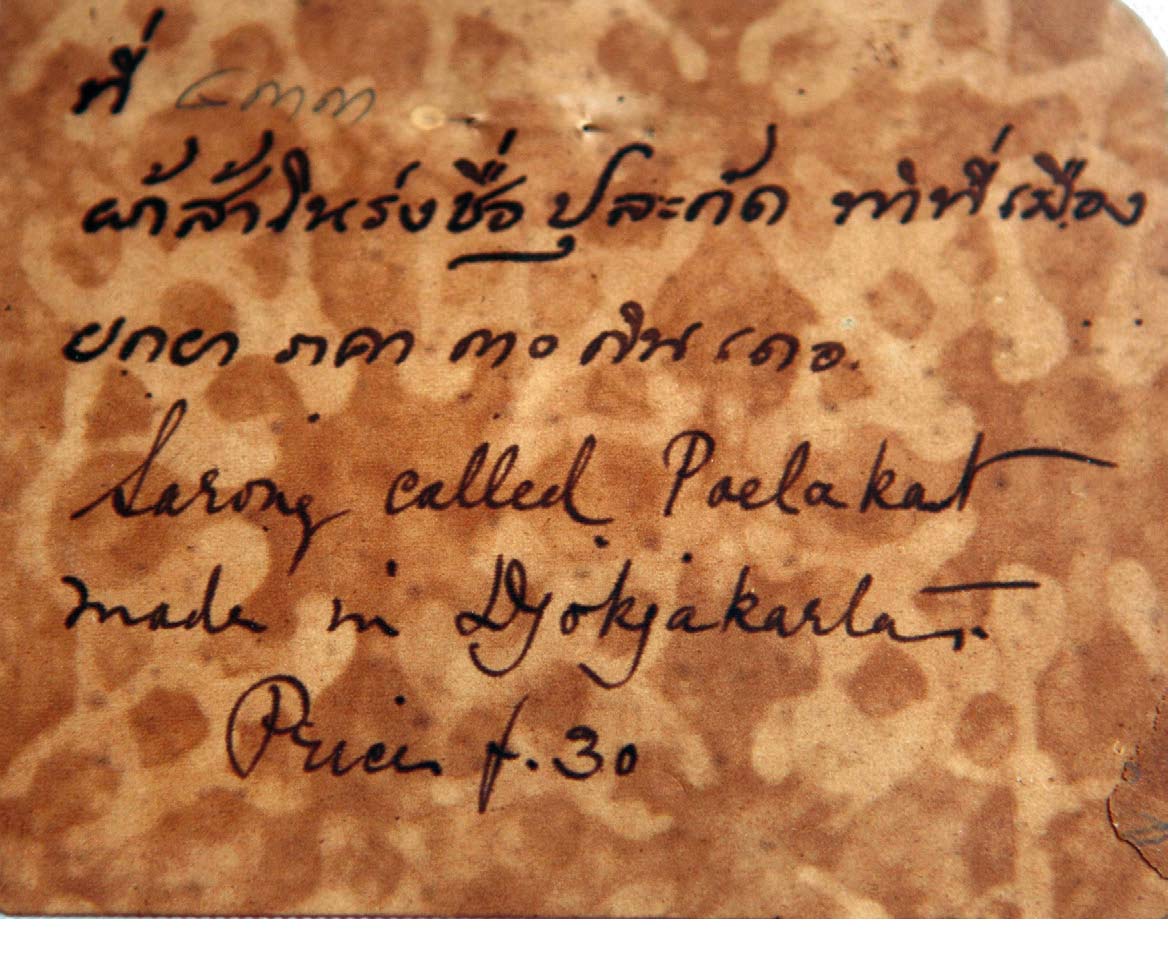
Fig. 4a: An example of the many inventory cards with the collection. Written in Thai and English it gives the name of the pattern, the place the piece was made, and the price in guilders. Photo courtesy of the Queen Sirikit Museum of Textiles, Bangkok.
Accompanying the collection are inventory cards handwritten in Thai and English with such information as place of purchase, function (a head cloth or sarong, for example), the name of the pattern, and the price in Dutch guilders [fig. 4a]. This practice probably began in 1896, when the bulk of the collection was purchased. These alone are rare survivals, seldom, if ever, available for historical textiles. But pieces of lined note paper in a different, classic European hand accompanied many of those cards, reading “W. v Lawick v Pabst” [fig. 4b]. This author's research revealed that they were “signature papers” used by Indo-European batik entrepreneurs before 1900, when waxed signatures on the cloth itself became the norm. Nowhere, however, has an example of one of these papers been published until now.
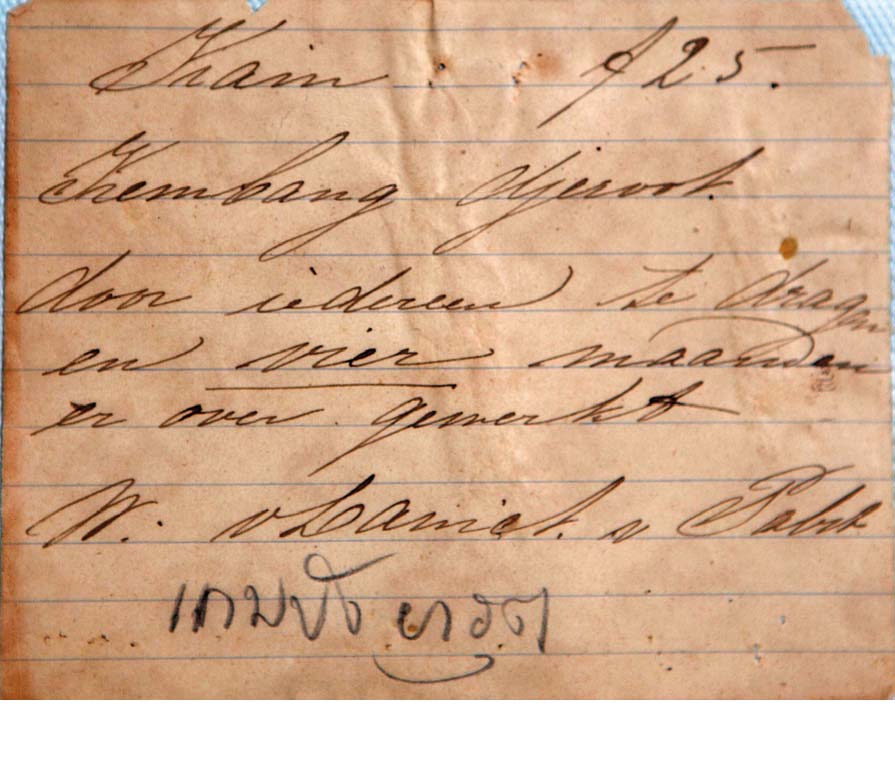
Fig. 4b: A “signature paper” with the collection from W.F. van Lawick van Pabst, most likely written by the younger Wilhelmina Frederika who would have had a Dutch education in the East Indies, unlike at least two of her brothers who were sent back to the Netherlands for their education. Bureau of the Royal Household. Photo courtesy of the Queen Sirikit Museum of Textiles, Bangkok.
But who was this person, whose name was mentioned only once in the literature? 7 Author Sandra Niessen did an outstanding job identifying the fascinating story behind those initials: Wilhelmina Fredericka van Lawick van Pabst was, in fact, two women with the same name, a mother (1827-1905) and a daughter (1856-1909), who produced some of the finest batik in Central Java. They were members of a famous aristocratic family with deep roots in the Indies and high-level connections in both Java and the Netherlands. Despite the fame of their production from the latter half of the 19th century to the death of the daughter in 1909, as well as the existence of batik process and pattern samples from the Dutch East Indies pavilion of the 1900 Paris Exposition Internationale (now in the collection of the Tropenmuseum), 8 the workshop and its owners were all but forgotten by the mid-20th century [fig. 5]. 9
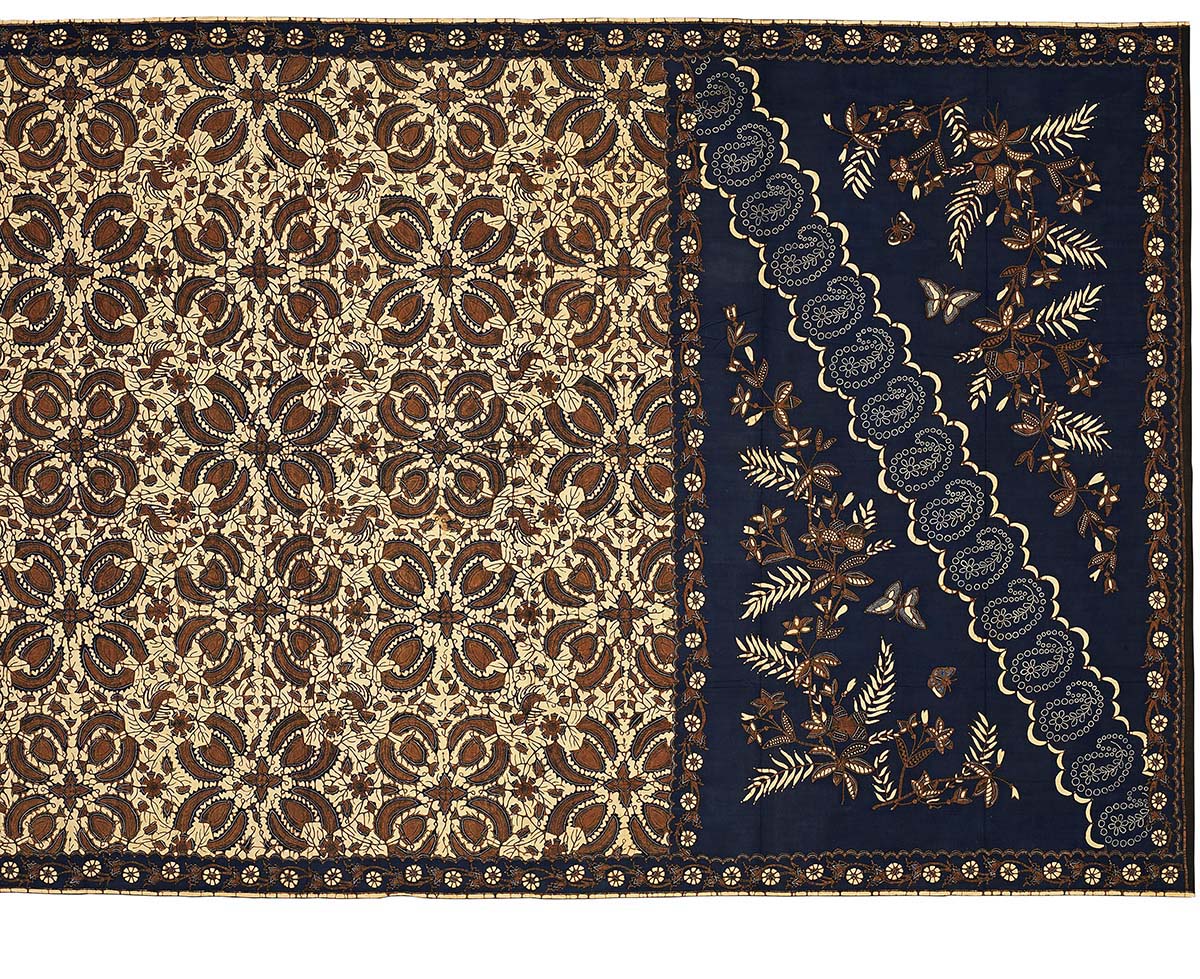
Fig. 5: Workshop of W. F. van Lawick van Pabst, Yogyakarta, Java. Sarung (unsewn) with Delima Wantah (Pomegranate) Pattern. Yogyakarta. Hand-drawn wax resist, vat-dyed on plain-weave cotton. 107.4 x 217.5 cm. Bureau of the Royal Household, Inv. #171. Photo courtesy of the Queen Sirikit Museum of Textiles, Bangkok.
For His Majesty’s health, 5 March - 24 July 1901
During this third and last trip, one of the king’s sons, Prince Asadang, became ill in Bandung. As a result, the king and queen stayed with their son for over a month. The king’s diaries tell us that on a rainy 12 June, he requested that the “batik seller from Pekalongan” be summoned to the hotel. It should be noted that Bandung at this time was considered the “Paris of Java,” with a large foreign population and establishments selling fashionable batiks, many made in towns along the north coast of the island.
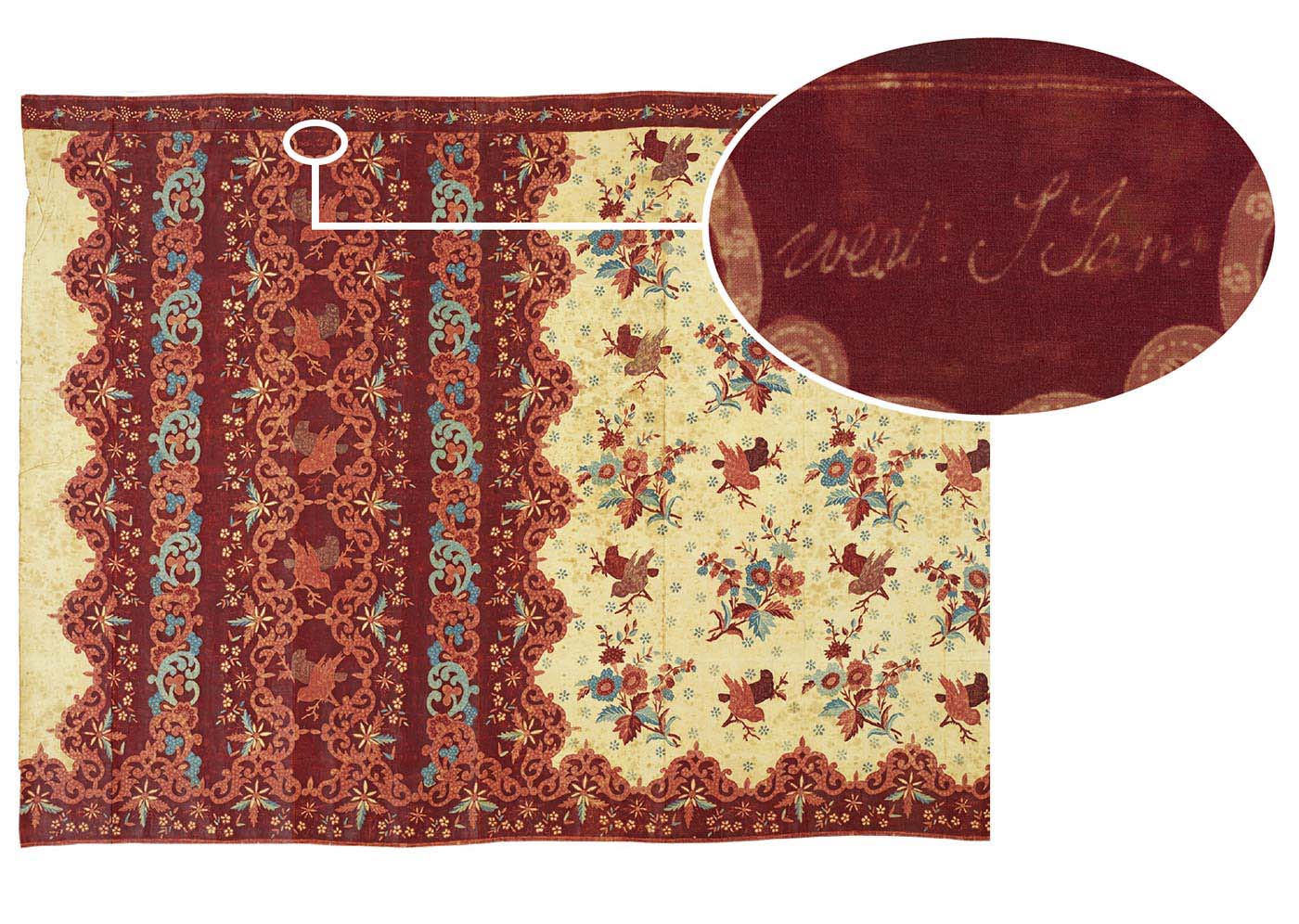
Fig. 6a and 6b (inset): Sarong (unsewn). Signed “Wed. Jans” (Mrs. A.J.E. Jans, b. Java, c. 1850-c.1920). Pekalongan. Hand-drawn wax resist, vat-dyed on plain-weave cotton, 105.8 x 220.7 cm. Bureau of the Royal Household, Inv. #109. Photo courtesy of the Queen Sirikit Museum of Textiles, Bangkok
There are eight pieces in the collection from the workshop of the famous batik entrepreneur, Mrs. J. Jans, based in Pekalongan. They were almost certainly purchased on 12 June. One piece [Fig. 6a and 6b] is signed “Wed. Jans” (weduwe, “widow”), a signature that she seems to have used from 1885 when her husband died until around 1900, as it is the only one with this signature in the group purchased by the king; the other pieces of hers are simply signed “J. Jans” or unsigned. There is also an Art Nouveau feel to the somewhat trapezoidal transverse panel which would have been very “Avant Garde” in 1901. Her pieces were expensive and fashionable, her clients the wives of Dutch officials, either Dutch (as was she) or Indo-European (their status as wives of those officials entitled them to identify as Dutch). The feminine colours and motifs of her sarong would have made them perfect for at-home wear. The clean white or cream backgrounds and predominately floral patterns echoed Dutch printed cottons (inspired by the famous Indian chintzes made for the European market), while the romantic lacey border designs were similar to the lace trim worn by European women in that era.
Dale Carolyn Gluckman retired from the LACMA after 23 years and is now an independent curator and museum consultant specialising in Asian textiles and dress. From 2006 to 2018 she was a senior consultant to the Queen Sirikit Museum of Textiles (OSMT) in Bangkok. Contact: jonanddale@hotmail.com